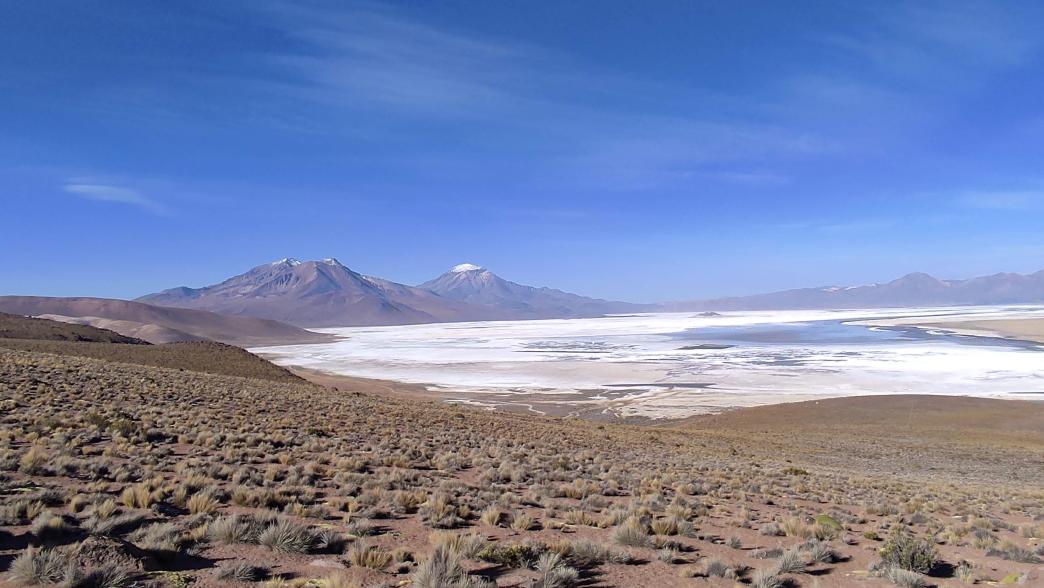
New Strategic Minerals Videos: Supply Chains and Governance Challenges in Andean Countries
Español »
The urgency of the global transition to clean energy sources and the need to implement the Paris climate agreement, coupled with economic recovery from the coronavirus pandemic, have significant implications for the extractive industries. This means new challenges and opportunities along the supply chains of minerals such as lithium and copper, demand for which continues to grow because of their use in green energy generation technologies. In parallel, polluting minerals such as coal face the possibility of becoming “stranded assets,” resources that have lost their value due to changes in global energy consumption.
In this context, the Natural Resource Governance Institute (NRGI), with the support of the German Cooperation (GIZ), has produced videos on three topics: coal in Colombia, lithium in Bolivia and Chile, and copper in Peru. These videos explore perspectives on critical minerals and governance challenges in South America’s Andean countries and can serve as a starting point for much-needed dialogue.
Bolivia and Chile: Challenges and gaps for the industrialization of lithium and its inclusion in global chains
There are high expectations around lithium due to the projected growth in demand for batteries for electric vehicles, in which lithium is a key component. However, enthusiasts must better understand projections of the lithium market and the battery industry in a context of greater dynamism in the global energy transition.
Changes in the energy matrix will lead to a greater demand for lithium, so countries with significant lithium reserves must consider the feasibility of adding value to its production to participate in the global market. In addition, to strengthen the governance of the sector, governments must plan how to manage the social and environmental impacts. The growth in demand for lithium is an opportunity to discuss the energy transition, mining governance, as well as the increase in electromobility in producing countries such as Bolivia and Chile.
Peru: Environmental and social impacts around the copper supply chain
Copper is the main export of Peru, the second-largest exporter of copper concentrate in the world. As an important source of foreign exchange and revenue, copper contributes significantly to Peru’s national economy.
In the context of energy transition and the use of new technologies for the mineral-intensive generation of renewable energy, demand for copper (needed in most green technology) will grow. However, Peru has a series of governance problems, such as mining conflicts related to water and land access, as well as poor citizen participation. The government, with the support of different actors, must urgently strengthen mining governance so that the sector contributes to economic recovery, respecting the rights of the populations and with policies that promote the development of economic linkages, following criteria of sustainability and inclusive employment.
Colombia: Coal supply chain in a context of energy transition
Thermal coal is Colombia's second-largest export, after oil, and is an important source of economic activity and tax revenue. However, despite the abundance and quality of reserves, Colombia’s thermal coal industry faces a difficult future likely characterized by a long-term structural decline in demand, influenced by the increase in electricity generation from renewable sources versus fossil fuels, of which coal is the dirtiest.
The International Energy Agency forecasts that coal prices will ultimately decline, in all scenarios, and coal is at risk of becoming a stranded asset — hence the urgency for the transition to other forms of energy generation and the search for alternative economic activities for the regions dependent on this mineral. The transition to other forms and sources of energy opens the door to new governance models for natural resources. To reap those benefits, governments and other actors involved must therefore agree on a just transition plan that strengthens productive capacity, promotes new economic sectors and solves environmental liabilities.
Anna Cartagena is the communications officer for Latin America at the Natural Resource Governance Institute (NRGI).
The urgency of the global transition to clean energy sources and the need to implement the Paris climate agreement, coupled with economic recovery from the coronavirus pandemic, have significant implications for the extractive industries. This means new challenges and opportunities along the supply chains of minerals such as lithium and copper, demand for which continues to grow because of their use in green energy generation technologies. In parallel, polluting minerals such as coal face the possibility of becoming “stranded assets,” resources that have lost their value due to changes in global energy consumption.
In this context, the Natural Resource Governance Institute (NRGI), with the support of the German Cooperation (GIZ), has produced videos on three topics: coal in Colombia, lithium in Bolivia and Chile, and copper in Peru. These videos explore perspectives on critical minerals and governance challenges in South America’s Andean countries and can serve as a starting point for much-needed dialogue.
Bolivia and Chile: Challenges and gaps for the industrialization of lithium and its inclusion in global chains
There are high expectations around lithium due to the projected growth in demand for batteries for electric vehicles, in which lithium is a key component. However, enthusiasts must better understand projections of the lithium market and the battery industry in a context of greater dynamism in the global energy transition.
Changes in the energy matrix will lead to a greater demand for lithium, so countries with significant lithium reserves must consider the feasibility of adding value to its production to participate in the global market. In addition, to strengthen the governance of the sector, governments must plan how to manage the social and environmental impacts. The growth in demand for lithium is an opportunity to discuss the energy transition, mining governance, as well as the increase in electromobility in producing countries such as Bolivia and Chile.
Peru: Environmental and social impacts around the copper supply chain
Copper is the main export of Peru, the second-largest exporter of copper concentrate in the world. As an important source of foreign exchange and revenue, copper contributes significantly to Peru’s national economy.
In the context of energy transition and the use of new technologies for the mineral-intensive generation of renewable energy, demand for copper (needed in most green technology) will grow. However, Peru has a series of governance problems, such as mining conflicts related to water and land access, as well as poor citizen participation. The government, with the support of different actors, must urgently strengthen mining governance so that the sector contributes to economic recovery, respecting the rights of the populations and with policies that promote the development of economic linkages, following criteria of sustainability and inclusive employment.
Colombia: Coal supply chain in a context of energy transition
Thermal coal is Colombia's second-largest export, after oil, and is an important source of economic activity and tax revenue. However, despite the abundance and quality of reserves, Colombia’s thermal coal industry faces a difficult future likely characterized by a long-term structural decline in demand, influenced by the increase in electricity generation from renewable sources versus fossil fuels, of which coal is the dirtiest.
The International Energy Agency forecasts that coal prices will ultimately decline, in all scenarios, and coal is at risk of becoming a stranded asset — hence the urgency for the transition to other forms of energy generation and the search for alternative economic activities for the regions dependent on this mineral. The transition to other forms and sources of energy opens the door to new governance models for natural resources. To reap those benefits, governments and other actors involved must therefore agree on a just transition plan that strengthens productive capacity, promotes new economic sectors and solves environmental liabilities.
Anna Cartagena is the communications officer for Latin America at the Natural Resource Governance Institute (NRGI).
Authors

Anna Cartagena
Communications Officer, Latin America
